![Four Powerful Ways Companies & Freelancers Can Effectively Work Together [Hubspot Guest Post]](/templates/yootheme/cache/6a/four-ways-work-together-6af010f0.jpeg)
Four Powerful Ways Companies & Freelancers Can Effectively Work Together [For Hubspot]
On May 17, 2017, I spoke at the Atlanta Hubspot User Group on how companies and freelancers can work well together. The following blog post was originally published on the Atlanta HUG website.
Below, I share the four areas of insight that help empower both freelancers and companies to have a sweet spot working relationship explored at the event.
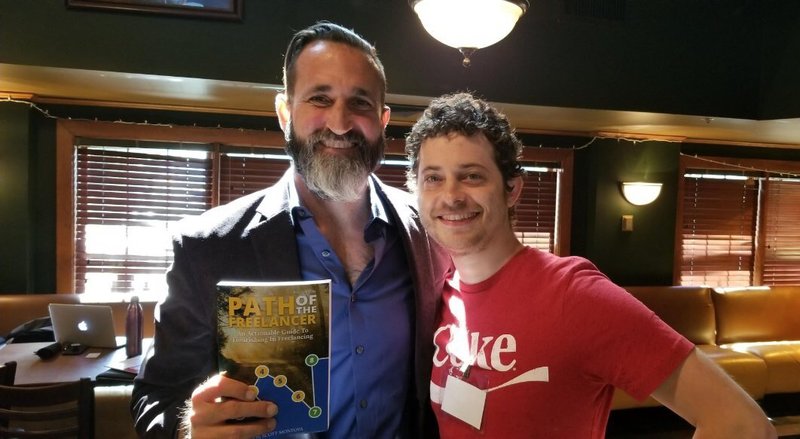
If you are looking for a freelance Hubspot specialist, look no further. I've been working with Hubspot for years helping customers improve revenue and eliminate staff labor. If you're interested or ready to explore this marketing solution, let's talk.
Effectively Working Together
The lack of capacity and appropriate skill level are two reasons companies reach out to freelancers to help bridge the gap. While this partnership extends production and provides flexibility to the business, it can also become the source of their frustration. On the flip side, freelancers can be left in the stressful wake of working with over-demanding companies.
So, how we do get unified and work together effectively? We need to understand our respective intentions, know the structure of how we'll work together, have a system for managing projects, and create a harmonious working relationship.
Let’s start by talking about our intentions...
What Motivations Do We Bring To The Table?
Intentions (or motivations) are the currents that affect our behavior and this is true whether we acknowledge them or not. When we fail to explore these, we can often find ourselves in problematic working relationships, unmet expectations, and disappointing project results.
Instead of avoiding discussing these intentions, let's seek to better understand what they are and how they affect us. Mastering this step will lay a solid foundation for all new working relationships. Let me dive into one of my motivations.
I have a long term aspiration for creating a financially sustainable writing career. This means I'm not going to be freelancing my entire career. It leads me to begin all engagements by thinking with the end in mind. My goal is to get the owner to a place where they can excel beyond me. To steward well and leave them better off causes me to structure and organize the work we do while also building a team around me to set the client up for success.
While working with one of my Hubspot clients it's been apparent how his personal ambition is determining how we position the company to achieve his goals. In the last two years, we've more than doubled his revenue and he could very easily sustain the volume of business we've sustained.
At the same time, we've created a powerful business model that can allow him to more easily expand to other cities, states and eventually countries. So the question he needs to answer is, does he want to build a large scalable company or does he want to sustain a small company and live the way he wants? His personal intentions matter because they affect the business strategy.
Ok, so now we realize how intentions affect our work, how do we effectively discover what they are for ourselves and others?
This is where the Formula for Intentionality comes into play. This formula is a framework I developed to help us better understand our intentions and what it means for each of us to be intentional.
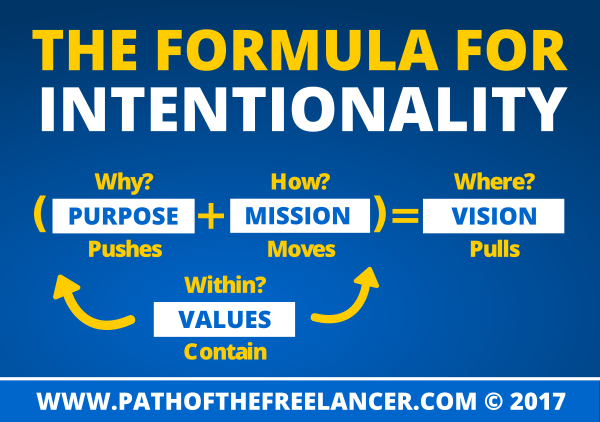
The formula of intentionality is made up of purpose (our why), mission (our how / strategy & goals), vision (our where), and core values (within what guidelines will we operate?). It’s quite simple on how it works, but can be rather complicated when we’re tasked with coming up with the ingredients of this formula for ourselves or others.
So, here’s a few questions to help you practically apply this when you consider working with freelancers.
If you're looking to hire a freelancer, simply ask yourselves why? How? What do you expect to accomplish? And within what guidelines will you operate? When you bring this information to the table you empower your freelancers to more effectively lead the project and deliver beyond your expectations. It also eliminates ambiguity and accelerates project progress.
Freelancers, ask yourself why are you freelancing? What problems are you equipped to solve? What do the businesses you work with experience when you’ve succeeded at working together?
By defining our intentions for ourselves, we can better communicate with others how our motivations will affect the work we do. When both parties have defined these elements, we can more easily determine intentionality alignment or misalignment.
Once we know what is driving us, we'll want to determine how we want to work together.
How Will We Structure Our Engagement?
Freelancers and those representing a company will want to begin the relationship by understanding the terms of what it means to work together. If we don't know how we’ll communicate or hold each other accountable for paid services, we're setting ourselves up for disappointment and chaos. Chaos does not lead us to the desired outcome.
Either the freelancer or company needs to establish a method for how we'll work together. Ideally, both embrace the structure and we adjust it to optimize the engagement.
Let me share the model of how I work with my clients as a way to identify the different fundamental tensions we need to consider in the structure we create:
BAM - Batch Action Management
Ultimately, we want a reliable system for where we'll start working together, how we'll communicate along the way and when we need to pause reflect and adjust our future activities.
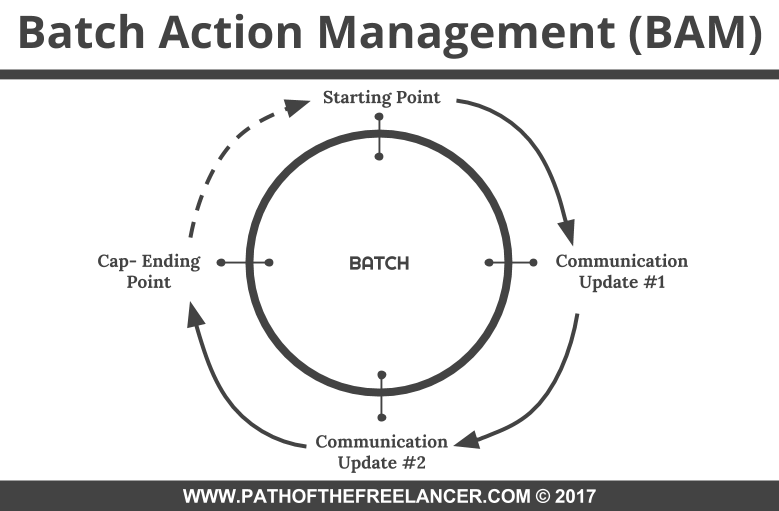
I’ve developed a system called BAM (Batch Action Management). Simply put, I work in batches of 10 hours at an hourly rate of $85. Clients are committing to $850 for each batch we work on together. As you can see in the graphic, there is a starting point, two communication points, and a cap-ending point.
The starting point is where we’ll start our project. It could be a project discovery, a marketing audit or some specific need they need help resolving. The communication updates play out twice per batch allowing me to check in with the client and have my efforts directed where needed. If all is good, I’ll simply continue on the path I was heading. The cap-ending point acts as an on/off-ramp to allow the client to continue working with me, pause the engagement, or permanently end it.
When I work with customers in an ongoing capacity, we’ll establish a pace of batches to execute on a monthly or quarterly basis. This transforms the batch cap into another communication checkpoint and the cap-ending point is when we’ve concluded the number batches approved for the determined period of time.
As an employer of freelancers, I want to know my freelancers are working diligently and on task. I don't want to become blind-sighted by unexpected expenses or to find out my freelancer was working on projects that were not a priority or of benefit to the company. The BAM system facilitates this process and whatever system you decided to use needs to address the needs of communication and accountability.
Let’s now jump into how we’ll organize our projects within the BAM system.
How Will We Organize Our Projects?
What framework are we using to organize our ideas? What tool are we using to manage these ideas? How are we going to ensure projects are completed correctly?
These seem like simple questions with simple answers, but many projects go awry when we don’t define and clarify the answers to these questions upfront.
When I’m working with my customers on our targeted projects, I also put on my SOFI goggles. SOFI stands for Seeking Opportunities For Improvement. This means while I’m working on the task in front of me, I’m also finding other problems and challenges to overcome. While this proactive mindset is helpful for us and our client, we need a way to organize what we find so we can continue on the priority projects but ensure we don’t forget about them when we’re ready for the next set of tasks.
This is where the IDEMA framework comes into play. IDEMA is a framework for capturing and sustaining ideas. Each letter represents a stage in the process.
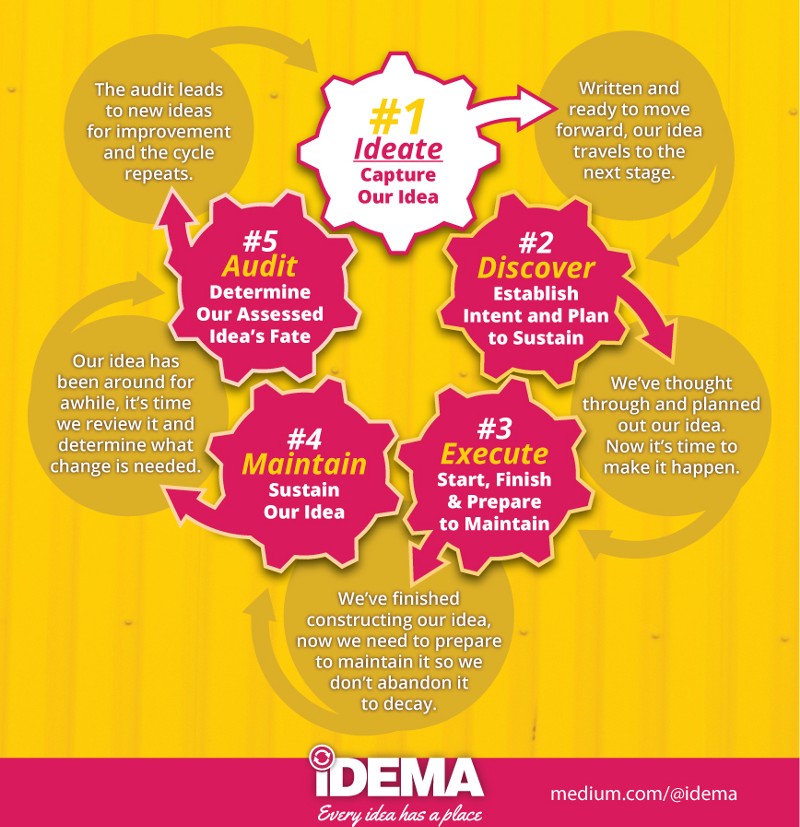
Once we have a bucket for different types of ideas and projects, we now have a way to organize them so we can easily document them and reference at a later point. With a framework, we can simply leverage a tool like Trello or Airtable to keep track of the ideas. This allows us to receive and give accountability on various tasks and projects as we have visibility of everything going on and who is involved. It becomes our map for moving projects forward and help me ensure projects get done.
With our intentions fleshed out, a structure for how we’ll work together and a system for organizing our project in place, we’ve set the stage for a sweet spot working relationship.
How Do We Build A Sweet Spot Relationship?
Proactive and responsive communication, prompt and accurate billing, and valuable relationships are what make up a sweet spot working relationship.
I’ve got clients that reply to every email and phone call and others who require I track down just to know if my messages are getting through! Many companies I’ve worked with have experienced this same dynamic with freelancers they’ve hired. When it comes to communication, we’ll want to establish a habit of doing it well and promptly. This alone can set us apart as a for most others.
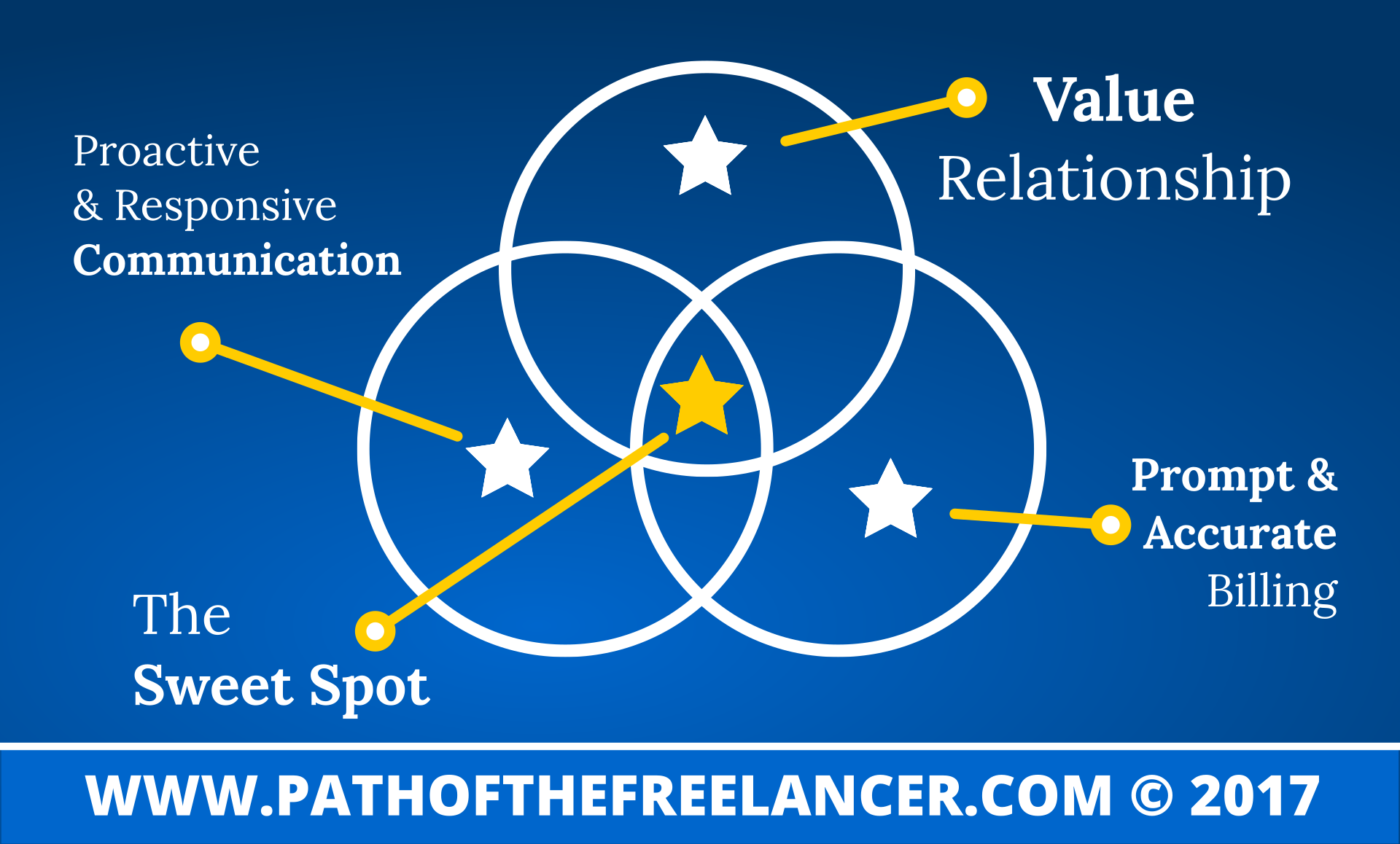
Freelancers, we also want to be sure we’re invoice accurately and regularly. No client wants to get hit with a ton of backlogged invoices so make sure you send them as you work. Companies, make sure to pay your invoices on time or early. We, freelancers, have financial obligations and juggling cash flow is extra stress we’d prefer to avoid.
Outside of communication and money, the relationship matters. We want to work with people we like. Creating a relationship outside the immediate work we’re doing builds client relational equity and it’s something we need to tap into from time to time when we hit rocky moments along the way. Also, when we’re doing work that is meaningful it creates an intangible value in the working relationship.
For those we love working with, I also encourage advocating on each other’s behalf. Spread the word and connect others you meet to your clients or freelancers. It’s always helpful to have others spreading the good news of how we can serve others.
Conclusion
Working with independent freelancers can be challenging. Freelancers also know it can be challenging to work with demanding companies. To help us navigate these difficulties, we’ll want to understand each other’s motivations and how they affect the work we do. We’ll also want to establish a structure for how we’ll engage and how we’ll manage projects. This foundation will set the stage for success or failure. With a solid foundation in place, we’ll benefit from the sweet spot relationship we’ve cultivated.
My Guest Blog Posts, Hubspot, Event
- Created on .
- Last updated on .